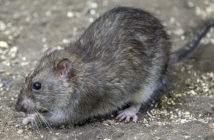Anticoagulant rodenticide resistance is a problem well known in the industry. So, when news reached the office of a novel rodenticide formulation, we were, naturally, very interested to learn more.
Scientists at Aston University led by Dr Andrew Ingham, in conjunction with the Pied Piper consortium and funded by the European Union, have developed an alternative to anticoagulant rodenticides.Their work was featured in a BBC News report and is certainly worth a watch.
|
Your opinions sought |
||
| The press release sent to the Pest office from the Pied Piper consortium says:
“The consortium has developed a novel rodenticide formulation and device, which allows the delivery of the poison through a rat’s skin. The formulation uses cholecalciferol (Vitamin D3), which is naturally synthesised in the skin of many mammalian species, negating the problems associated with anticoagulant poison resistance. The poison is sprayed on to the back of the animal when entering a pest control device. Rodents simply don’t know they have been dosed counteracting another common problem with existing rodenticides, that of ‘bait shyness’. Rodents are cautious mammals, they typically won’t approach poisoned baits if more familiar food sources are available. The system resolves the problem allowing control of a population to be initiated as soon as the device is sited. A pressurised can is able to dose hundreds of rodents individually, while remaining unnoticed and in full control of the poison. Academic results are been released through the literature which began earlier this month with the filing of the key patents. Commercialisation steps are still to be taken, with an expectation the product will be on the market within two years.” |
|
|




